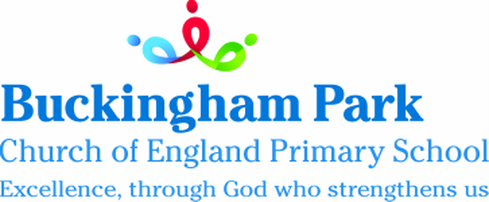Reading and Phonics
Phonics Training for Parents
Each year the school will run training sessions for parents to support their children with phonics at home. For 2023/2024 these dates took place on the following dates in our school hall:
Monday 16th October 8:50am – For Reception parents
Monday 6th November 8:50am - For Year 1 parents
These in person sessions will give you the chance to participate in lots of practical and enjoyable activities you can do with your child throughout their time in Reception and/or Key Stage One.
Parent feedback for these sessions:
'Very useful session, particularly how to teach the variations in sounds'
'The handouts help as it makes this all so visual'
'Great interactive session that will make this more fun for my child at home'
'This really helps me to understand some of the words and sounds my daughter comes home saying!'
Monday 16th October 8:50am – For Reception parents
Monday 6th November 8:50am - For Year 1 parents
These in person sessions will give you the chance to participate in lots of practical and enjoyable activities you can do with your child throughout their time in Reception and/or Key Stage One.
Parent feedback for these sessions:
'Very useful session, particularly how to teach the variations in sounds'
'The handouts help as it makes this all so visual'
'Great interactive session that will make this more fun for my child at home'
'This really helps me to understand some of the words and sounds my daughter comes home saying!'
Phonics meetings resources
Thank you to all parents who attended our parents meetings this year. Please see below an overview of the resources that were shared during this meeting to support reading and writing at home.
If you have any further queries regarding this, please speak to your child's class teacher via our school office.
If you have any further queries regarding this, please speak to your child's class teacher via our school office.
In-School Reading Support
We are committed to providing the best quality support for your children's reading in school and therefore, Buckingham Park welcome parent volunteers at times throughout the year to support reading in school. If you are interested in this, please register your intention at the link below:
Register your interest
Parents/volunteers will not conduct any reading support unless they have completed some phonics training before hand, with Mrs Whytewood, our Deputy Headteacher, who is also a Specialist Leader of Education for Early Years and Phonics. Parents who register interest in these sessions are accepting that training will need to be provided for this role.
Useful Documents
| Phonics and Early Reading Policy 2022/23 |
Useful Videos
Articulation of Phonemes
A simple video which shows the pronunciation for each of the phonemes (sounds) in the English language. These 'pure' sounds help the children to blend and segment - to read and write. Further information on articulation and enunciation can be found at https://www.lesleyclarkesyntheticphonics.co.uk/index.php/parents/125-articulation-of-phonemes
A simple video which shows the pronunciation for each of the phonemes (sounds) in the English language. These 'pure' sounds help the children to blend and segment - to read and write. Further information on articulation and enunciation can be found at https://www.lesleyclarkesyntheticphonics.co.uk/index.php/parents/125-articulation-of-phonemes
Useful Links
These links below will help to support you and your child alongside our in school provision.
http://www.oxfordowl.co.uk
Oxford Owl is a free website built to support you with your child’s learning. You’ll find age-specific reading and maths tips and activities, eBooks, and lots of fun ideas to really bring your child’s learning to life. You will also find support and advice on a range of questions you may have – including helping your child with their phonics, motivating boys to read and ensuring your child is doing their best in maths.
www.bookstart.co.uk
This website provides information about the national Bookstart scheme and the Bookstart packs that your child will receive as a baby, a toddler and at age three to four. It also gives information about sharing books with your child. You can find out about Bookstart events in your area, which you can attend with your child.
https://www.phonicsplay.co.uk/ParentsMenu.htm
Here you will find lots of information for parents about phonics including: what exactly phonics is, how it is taught in UK schools and suggestions for helping pre-schoolers prepare for learning phonics. You will also find lots of games and ideas to explore with children at home.
https://www.buckscc.gov.uk/services/libraries/books-and-reading/children
You're never too young to join the library. Every library has books, DVDs, CDs and much more for all ages. The library also runs events and activities for children throughout the year.
Oxford Owl is a free website built to support you with your child’s learning. You’ll find age-specific reading and maths tips and activities, eBooks, and lots of fun ideas to really bring your child’s learning to life. You will also find support and advice on a range of questions you may have – including helping your child with their phonics, motivating boys to read and ensuring your child is doing their best in maths.
www.bookstart.co.uk
This website provides information about the national Bookstart scheme and the Bookstart packs that your child will receive as a baby, a toddler and at age three to four. It also gives information about sharing books with your child. You can find out about Bookstart events in your area, which you can attend with your child.
https://www.phonicsplay.co.uk/ParentsMenu.htm
Here you will find lots of information for parents about phonics including: what exactly phonics is, how it is taught in UK schools and suggestions for helping pre-schoolers prepare for learning phonics. You will also find lots of games and ideas to explore with children at home.
https://www.buckscc.gov.uk/services/libraries/books-and-reading/children
You're never too young to join the library. Every library has books, DVDs, CDs and much more for all ages. The library also runs events and activities for children throughout the year.

